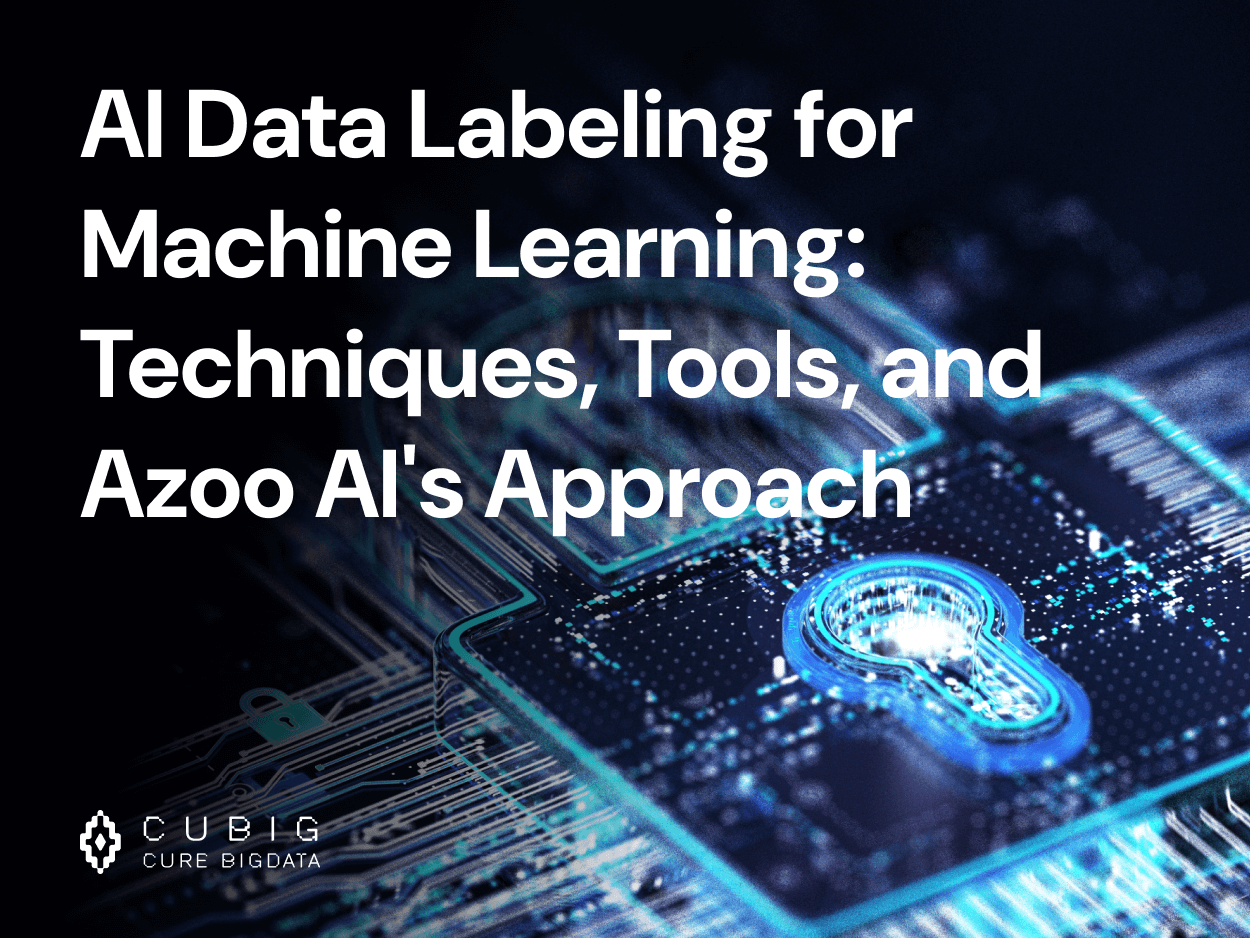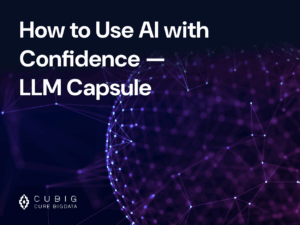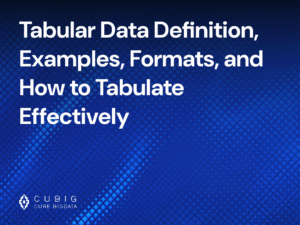AI Data Labeling for Machine Learning: Techniques, Tools, and Azoo AI’s Approach
Table of Contents
Data labeling is a fundamental step in building reliable and high-performing AI systems. It’s the process of adding tags to raw data—like text, images, video, and audio—so that machines can learn from it. In this article, we’ll walk through what data labeling is, how it works, where it’s used, and how Azoo AI helps you label better, faster, and more securely.
What is data labeling?
In machine learning, data labeling means assigning one or more tags to a data point to make it understandable to an algorithm. For instance, an image of a cat might be labeled as “cat,” allowing the model to learn the characteristics that define cats. Without labeled data, AI models trained using supervised learning can’t function.
Labeled data acts as ground truth. It enables models to map input data to the correct output—like translating text, detecting objects, or classifying emotions.
AI and Machine Learning data labeling
1. Computer Vision
In computer vision, labeling tasks include drawing boxes around objects or segmenting parts of an image so AI models can learn what they are.
2. NLP
For text, labels might include the emotion of a sentence, named entities like names or locations, or the user’s intent in a query.
Data labeling in large language models (LLMs)
1. Using prompt-response pairs for fine-tuning
Fine-tuning LLMs often involves giving the model structured examples in the form of prompts and correct responses to guide learning.
2. Instruction tuning and human feedback integration
Instruction tuning helps LLMs follow tasks more reliably by training them with task instructions and feedback from human evaluators.
3. Programmatic labeling for scalable LLM data generation
LLM datasets can also be generated at scale using scripts that label text programmatically based on patterns or logic.
How does data labeling work?
Data labeling isn’t just about drawing boxes or tagging words. It’s a structured workflow:
Data Collection
Gather raw data from internal or external sources.
Data Preprocessing
Clean and normalize the data.
Labeling Task Design
Define labeling schema and edge cases.
Annotation
Apply labels manually or with automation.
Quality Assurance
Review and validate labels through auditing or consensus.
Versioning and Storage
Store datasets with version history for traceability.
How can data labeling be done efficiently?
Pre-labeling using AI-assisted tools
Use AI to create initial labels that humans only need to review or correct.
Programmatic and weak supervision techniques
These techniques apply labels with minimal manual effort using logic or partial labels.
Active learning to focus on uncertain samples
Label the data that the model is most unsure about to improve its learning quickly.
Labeling operations management and analytics
Tools that help track progress, quality, and workforce performance for labeling projects.
Labeled data vs. Unlabeled data
| Category | Labeled Data | Unlabeled Data |
|---|---|---|
| Description | Annotated with tags or ground truth | Raw input with no annotations |
| Use Cases | Supervised learning | Pre-training, clustering, self-supervised learning |
| Cost | Higher (manual/automated effort) | Lower (no labeling yet) |
Data labeling approaches
1. Internal manual labeling
Your own team manually applies labels to ensure full control over quality and security.
2. External manual labeling
Labeling is outsourced to vendors or crowdsourcing platforms for faster scaling.
3. Semi-supervised labeling
Combines a small amount of labeled data with a larger amount of unlabeled data to train models efficiently.
4. Automated labeling
Uses pre-trained models or rules to apply labels automatically without human input.
5. Programmatic labeling
Applies labels using scripts or functions based on heuristics and predefined rules.
6. Hybrid approaches
Mixes manual, programmatic, and automated labeling for a flexible workflow.
7. Labeling function design
Defines reusable labeling logic for consistent programmatic annotation.
8. Label schema iteration
Updates labeling rules and definitions over time based on model performance or data feedback.
What are some common types of data labeling?
1. Image data: bounding boxes, polygons, keypoints, segmentation masks
Images are labeled to identify objects, shapes, or parts using visual outlines or regions.
2. Text data: sentiment tagging, topic labeling, NER, intent classification
Text is labeled to show meaning, such as emotion, subject, or important entities.
3. Video data: frame-by-frame object tracking, activity recognition
Videos are labeled to follow objects or detect specific actions over time.
4. Audio data: speech-to-text, sound classification, event tagging
Sounds are labeled for transcription or to identify audio events like alarms or voices.
5. 3D data: point cloud annotation for LiDAR and depth sensors
3D sensor data is labeled to detect structures, shapes, or people in environments.
What are some best practices for data labeling?
1. Develop and document precise labeling guidelines
Write clear rules for labelers so that annotations are consistent and easy to follow.
2. Train annotators thoroughly with examples and edge cases
Ensure labelers understand how to handle difficult or rare data types.
3. Incorporate continuous quality control and consensus checking
Regularly review labels with agreement checks or audits to ensure reliability.
4. Use performance metrics to identify bottlenecks and errors
Track accuracy, speed, and disagreement to improve your process over time.
5. Adapt guidelines over time based on feedback and model behavior
Labeling is never done—update instructions as your data or model evolves.
Data labeling use cases
1. Natural language processing (NLP)
Used for chatbots, text summarization, translation, and sentiment analysis.
2. Computer Vision
Applied in self-driving cars, healthcare imaging, and facial recognition.
3. Speech Recognition
Trains voice assistants and automated transcription services.
Benefits of data labeling
1. Enables Machine Learning
Without labeled data, supervised AI models can’t learn.
2. Enhanced Accuracy and Reliability
Well-labeled data improves model predictions and performance.
3. Mitigating Algorithmic Bias
Diverse and fair labeling can reduce unwanted biases in AI behavior.
4. Facilitates Faster Model Training
Clean labeled datasets shorten model development cycles.
Challenges of data labeling
1. The Lack of data security compliance
Sharing sensitive data for labeling can introduce privacy risks.
2. Low dataset quality
Inaccurate or inconsistent labels degrade model performance.
3. Lack of domain expertise
Annotators without subject knowledge may mislabel complex data.
4. High cost and scalability challenges
Manual labeling can be time-consuming and expensive to scale.
✅ Azoo AI solves these challenges with automation, synthetic data, and labeling workflows that meet global privacy regulations.
What are the key factors to consider when selecting a data labeling platform?
1. Data quality
The platform must produce consistent, accurate labels.
2. Workforce capability
Skilled labelers or access to a qualified workforce is essential.
3. Ease of use
The tool should be user-friendly for both engineers and annotators.
4. Speed and Throughput
Faster labeling means quicker AI development cycles.
5. Cost
Balance between quality and affordability is key.
How can your team benefit from Azoo AI’s ai data labeling capabilities?
Azoo AI accelerates your labeling process with automation, synthetic data, and scalable infrastructure. You get faster results, better data quality, and compliance-ready solutions tailored for modern machine learning workflows.
Need help labeling your AI training data? Contact Azoo AI to learn more.
CUBIG's Service Line
Recommended Posts









